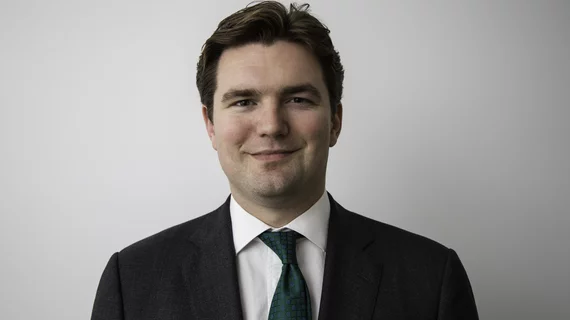Between groundbreaking technological breakthroughs and evolving healthcare policies, the medical imaging industry has a lot on its plate in 2018.
Peter Weems, director of policy and strategy for the Medical Imaging and Technology Alliance (MITA), spoke with Radiology Business about some of the biggest issues MITA is keeping a close eye on right now.
Read the full conversation below:
Radiology Business: Earlier this month, MITA expanded the scope of its voluntary service-based standard, the NEMA American National Standard for Servicing of Medical Imaging Devices. Now, the standard will cover all medical devices as opposed to just devices related to medical imaging. What led to that decision?
Peter Weems: MITA has been developing a standard on servicing medical imaging devices which will outline the minimum quality management requirements for servicing. If followed faithfully, the recommended approaches will ensure servicers give appropriate consideration to operational, performance and safety factors and thereby contribute to returning the device to safe and effective operation as soon as possible.
This standard has been developed in collaboration with a large group of stakeholders, representing a wide variety of interest groups and perspectives, including manufacturers, independent servicing organizations, clinical engineers, hospital systems, regulators, accreditors and others.
To get to this point, the draft standard underwent multiple comment periods, generating roughly 700 comments. During this process, multiple drafts of the standard were produced, each representing significant and substantial revisions based on stakeholder input.
On October 24, 2017 the proposed standard was balloted as an American National Standard for final approval. The ballot closed on December 8, 2017, and was supported by the majority of stakeholders, but did not meet the required two thirds support for approval.
Originally, we set out to develop a standard only for imaging devices but received considerable feedback—particularly from hospitals and clinical engineers—that a standard that covered all devices, not just imaging devices, would be preferable. These stakeholders work with many different devices and don’t want to have to manage conformance with multiple standards.
In response to this feedback, we decided to expand our initiative and invite participation from other materially affected stakeholders outside the imaging space.
In May 2017, a MITA representative testified in front of the House Energy and Commerce Committee’s health subcommittee about the need to expand FDA oversight to third-party servicers of medical devices. What’s the latest on that potential expansion of FDA oversight?
As part of 2017’s Medical Device User Fee Amendments to the FDA Reauthorization Act, the FDA is required to report back to Congress about a number of issues related to medical device servicing. The due date for that is May 15, and we’ve heard from the agency that they plan on publishing that update on time, so we should know more in these next few weeks.
Based on the FDA’s public comment period about this and the other information on adverse events we’ve sent their way, we’re hopeful they will find reason to extend consistent quality, safety and regulatory requirements to everyone who services a medical device, including independent servicing organizations.
With that said, we’re prepared to be disappointed. Our main concern is that the FDA will miss an opportunity to protect patient safety and punt on this issue.
In early 2018, after briefly going back into effect on Jan. 1, the medical device excise tax was once again suspended for two years. MITA has consistently supported delaying or even fully repealing that tax. Can you speak a bit about that tax? Why is this so important to MITA?
Full, permanent repeal of the medical device tax is a top priority for this industry. We see it as a tax on innovation. A full repeal would create a longer runway for thinking through these innovations and making long-term investments. Two-year reprieves are nice, but they don’t necessarily give the industry the confidence it needs to really make these investments and think far into the future.
What other policies or trends in the medical imaging industry are you watching closely right now?
Over the last year or so, we’ve added cybersecurity as one of our top industry priorities. We’re working on developing a software bill of materials policy—something we’ve heard interest in from both the FDA and Capitol Hill—and there have been a lot of issues around coordinated disclosure of risks or vulnerabilities, something the medical device industry is still working through.
A big issue related to cybersecurity is the idea of managing legacy products. Many medical devices remain in use for a very long time, but at a certain point, it may not be possible to continue to ensure that device is secure. It may be in use beyond the timeframe the manufacturer recommends or beyond support life for certain software components. We’re looking at what sort of incentives or other mechanisms could be put into place that would encourage the adoption of newer technology in those cases.
Also, there is a lot going on with machine learning, artificial intelligence and digital health. This is an area of major innovation for the industry. Within MITA, we’re actively working on the regulatory, standards, reimbursement and cybersecurity aspects of these issues, recognizing that it affects everything we do.

